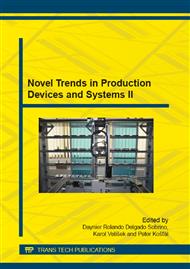p.311
p.317
p.323
p.329
p.335
p.340
p.346
p.352
p.358
Influence of the Position of Ignition Source on the Raw Materials Used to Produce Biofuel in Form of Wood Pellets
Abstract:
The aim of present work is monitoring thermal decomposition tested samples depending on distance of ignition source, subsequent generation of flame and flameless combustion. Tested samples are used to produce biofuel in form of pellets, which can be made of spruce wood (Picea excelsa, L.) and beech wood (Fagus sylvatica) and have a direct effect on the properties of these pellets. Measurements are carried out according to standard STN ISO 871:2010 Determination of ignition temperature using a hot-air furnace. External ignition source (electrically heated spiral of the wire canthal) is used to analyze different conditions of test samples. Distance between external ignition source and tested samples is 10, 50 and 90 mm. The experiments are performed at an air flow rate 38, 25, 12,5 and 0 mm.s-1. The results show the rate of loss of weight and the flow rates of the material of the test samples at the different test conditions.
Info:
Periodical:
Pages:
335-339
Citation:
Online since:
December 2014
Authors:
Price:
Сopyright:
© 2014 Trans Tech Publications Ltd. All Rights Reserved
Share:
Citation:


